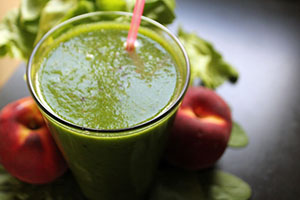 Adults who need 2,000 daily calories to maintain a healthy weight should eat 2 cups of fruit and 2½ cups of vegetables per day (a total of nine servings). According to the Centers For Disease Control and Prevention (CDC), however, only 14% of adults consume the recommended daily amount of fruits and vegetables (source). That’s a shockingly low number that should serve as a wake-up call to people everywhere.
Adults who need 2,000 daily calories to maintain a healthy weight should eat 2 cups of fruit and 2½ cups of vegetables per day (a total of nine servings). According to the Centers For Disease Control and Prevention (CDC), however, only 14% of adults consume the recommended daily amount of fruits and vegetables (source). That’s a shockingly low number that should serve as a wake-up call to people everywhere.
If you struggle to achieve to consume the recommended amount of vegetables and fruit, you should consider investing in a blender or juicer. Juicing and blending are both excellent ways to include more fruits and vegetables into your daily diet. Now for the million dollar question: which method is better for your health.
Some people assume blending and juicing refer to the same technique. In reality, though, they are two unique methods with their own advantages and disadvantages. Blending refers to the process grinding up fruits, vegetables and other ingredients to create a semi-thick smoothie that’s loaded in beneficial vitamins and nutrients. Blended smoothies are a nutritious and equally delicious treat that can be consumed as a mid-day snack or even a meal replacement (tip: add a scoop of protein powder).
Juicing, on the other hand, is a process in which the liquid juice is extracted from fruits and vegetables. The key difference between these two methods is that fibrous plant matter is separated and discarded in juicing. Juicers have a compartment that holds the fruits and vegetables. When the device is turned on, the ingredients are pressed to extract the liquid. The remaining fibrous material is then discarded (or used in a home composting system), and the unadulterated juice is consumed.
Because there’s no fiber in juiced beverages (only liquid), it digests faster and more easily. If you have a sensitive digestive system and frequently experience an upset stomach after consuming fiber, this may prove beneficial. With that said, drinking juiced beverages made largely with fruit juice can trigger blood sugar spikes. The fiber in smoothies acts to slow down the digestion process, resulting in a more gradual release of sugar and nutrients.
Juicing/Blending Tips:
- Use caution when juicing and blending fruits, as it can greatly increase the sugar content of your beverages. Just a single banana, for instance, has about 14-15 grams of sugar.
- A “liquid” medium, such as milk, yogurt or ice cream, is typically added to blended beverages to create a thinner consistency.
- Smoothies and juiced beverages are best when consumed 15-30 minutes after making them.
- Baby spinach, carrots, kale, cabbage, celery and wheatgrass are all super-nutritious vegetables that are perfect for juicing and blending.
- If you are serious about your health, invest in a quality juicer and/or blender.

